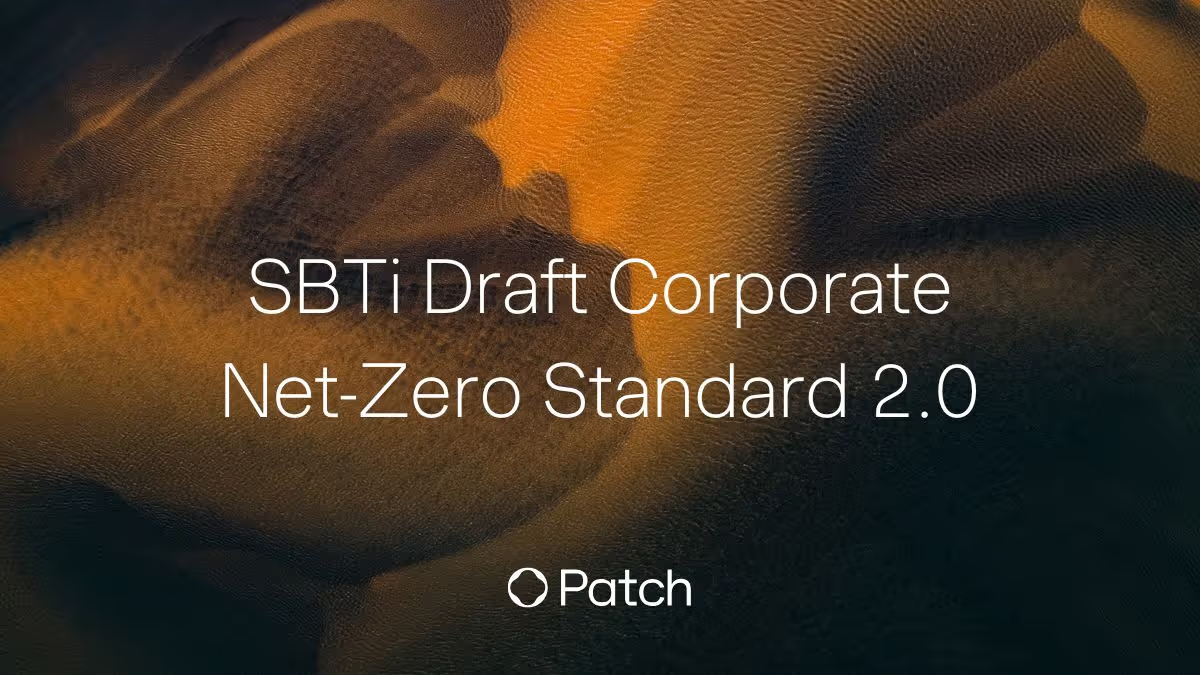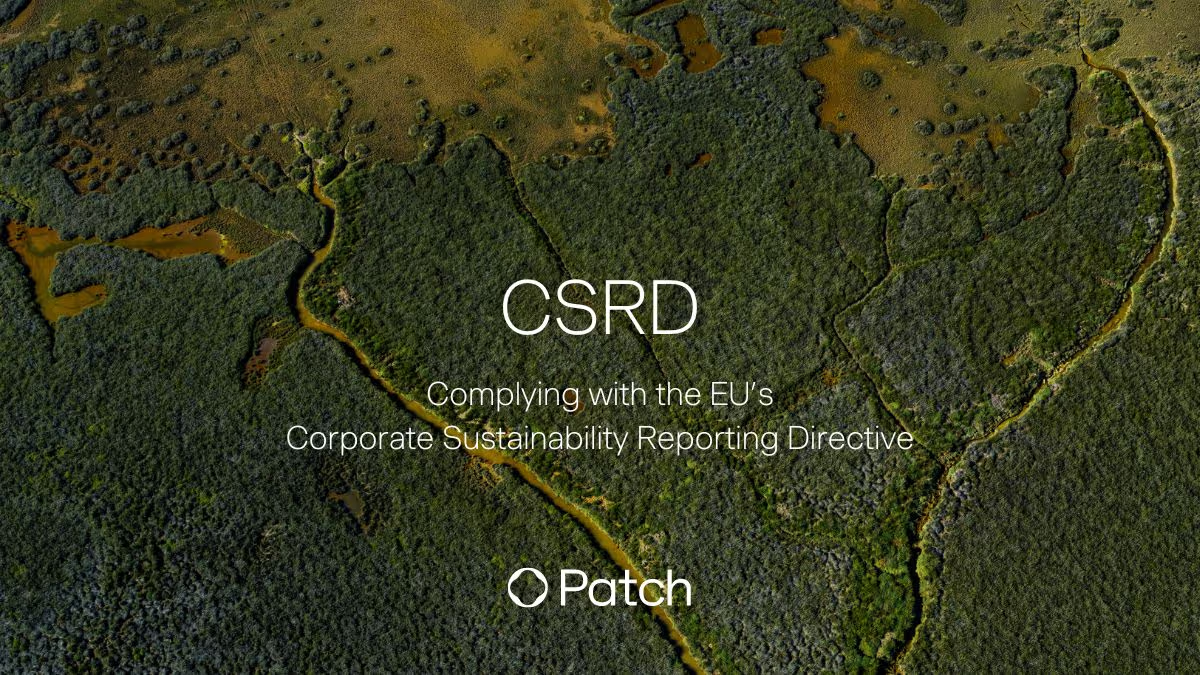The Science Based Targets initiative (SBTi) released two whitepapers this week that get into detail on their Beyond Value Chain Mitigation (BVCM) framework. Let’s break it down.
Key takeaways:
- For the first time, SBTi has officially recognized the role carbon credits play in climate strategy apart from and before neutralization. This will be a major unlock for many companies who have previously been hesitant to invest in the voluntary carbon market for lack of inclusion in the SBTi framework.
- BVCM encompasses many types of climate action — not just carbon credits. These reports provide a path for many types of mitigation (including adaptation and resilience planning) to count toward the standard.
- This framework is very flexible — to the point that some companies could find the open-endedness daunting. It puts a lot of work on sustainability leaders to make their own plan, choose a standard, and implement a strategy. But the reward is that those strategies can be fully aligned to both a corporate objective and to accelerating climate solutions.
SBTi is a partnership between nonprofit and U.N. groups (CDP, the U.N. Global Compact, World Resources Institute, and the World Wide Fund for Nature). They developed the first net-zero standard in 2021. Today, more than 4,500 companies have adopted science-based targets for decarbonization, and almost 3,000 have made net-zero commitments, including Adobe, Volvo, UnitedHealth — the list goes on.
That makes SBTi one of the largest standards for corporate sustainability in existence, with power to shape the climate action of some of the most influential companies on the planet. SBTi has mostly (and rightfully) been focused on decarbonization first (in other words, mitigation within a company’s value chain). But until now, there’s been little concrete guidance for how carbon credits (or rather, any investment or activity contributing to mitigation beyond a company’s value chain) can and should fit into the climate action of its ecosystem.
Carbon credits aren’t strictly necessary for BVCM — they’re just one of the more common types of climate action outside the value chain. And since they’re Patch’s focus, they’ll be what we focus on in this article.
SBTi started exploring the role BVCM should play in the net-zero process when they first published their net-zero standard in 2021. Since then, this program has been in public consultation.
Here’s what SBTi published on February 28:
- Above and Beyond: An SBTi report on the design and implementation of BVCM: Simply the suggestions themselves for how to implement BVCM into a sustainability plan (in other words, how companies can contribute to climate solutions in an SBTi-aligned way). It’s also got helpful case studies showing how real companies have done so.
- Raising the Bar: An SBTi report on accelerating corporate adoption of BVCM: Survey results, analysis, and supplemental research into why companies should adopt BVCM strategies, the business case for BVCM, what the barriers are to them doing so, and how policymakers, investors, standards setters, and consumers can break down those barriers.
That’s the context. So, what do you need to know about BVCM?
The case for BVCM
With the release of the UN IPCC’s AR6 synthesis report, it’s now clear there isn’t a realistic pathway to 1.5°C (and likely even 2°C) that doesn’t include carbon removal. What’s also clear is we’re not currently trending towards scaling carbon removal capacity to the levels we’ll need by the mid-century. Something has to change.
SBTi identified the potential in its network to effect that change. In “Above and Beyond,” they estimate that if every company with an SBTi-validated target equaled the totality of their unabated scope 1 and 2 emissions with BVCM activities in 2022, it would have amounted to 422 million tonnes of CO₂e.
To put that in context, that’s more than two-and-a-half times the volume of all credits retired by the VCM (voluntary carbon market) that year — and more than the sum of the UK’s emissions that year as well.
SBTi has two stated goals for BVCM:
- Deliver additional near-term mitigation outcomes to achieve the peaking of global emissions in the mid-2020s and the halving of global emissions by 2030.
- Drive additional finance into the scale-up of nascent climate solutions and unlock the systematic transformation needed to achieve net-zero by mid-century.
Moreover, SBTi also makes the business case for contributing to carbon removal in five points:
- It can reduce costs in damages as a result of climate change
- It can help companies gain tax incentives and avoid penalties
- It can help companies secure and maintain investment
- Consumers are willing to pay a premium for sustainability
- It will help scale technologies in anticipation of future demand for permanent removal credits
When it comes to the questions about project quality, impact standards, and additionality and permanence, we don’t see any of the specificity in these reports as we saw in the public consultation document. What we get instead are guiding principles that lay out the components of what a best-in-class BVCM project would look like.
Rather than getting locked into strict criteria, SBTi is betting that flexibility and customizability will help sustainability leaders accomplish strategic goals rather than tactical ones — like lowering abatement costs or preventing ecological tipping points.
Overall, this flexibility may help increase engagement. Flexible options means the program will apply to a greater range of company goals that are already in play — or help companies better align their BVCM targets with projects and programs that are meaningful to their operations. Whether you’re a food company setting agricultural resilience targets, a company with coastal infrastructure protecting against sea level rise, or a technology company investing in direct air capture, many different approaches have a route to meet the BVCM principles.
How does BVCM fit into SBTi’s net-zero framework?
The first thing to note is that BVCM is now an official step in SBTi’s target-setting process with an official framework. It is not required — only recommended. But this means that contributing to carbon removal and avoidance is now officially a best practice according to SBTi, and they’re making strong arguments for the climate impact of carbon credits as well as the business case for buying and retiring them.
There are four steps to setting and meeting a net-zero standard:
- Set near-term targets
- Set long-term targets
- Beyond value chain mitigation (like contributing to carbon removal)
- Neutralize residual emissions (i.e. emissions a company is unable to abate by their target date despite best efforts)
And the BVCM sub-process likewise has multiple steps: pledge → action → reporting. Each one functions like a roadmap for a corporate sustainability leader to build a carbon credit strategy. Let’s dig into the steps.
Establish a BVCM pledge
Establishing a BVCM pledge starts with understanding your business case and strategic goals. It could be minimizing future climate risk with a focus on your region. It could be accelerating next-generation technologies to scale. It’s on the company to decide. Leaders also need to set a definitive time period. SBTi recommends a minimum 5-year commitment, with more frequent check-ins on progress. Lastly, and perhaps most important, BVCM pledges need to define their scale, or how much they are willing to contribute to BVCM activities (by monetary value or volume). Different companies have different abilities to pay, and may have other binding climate commitments that dictate their level of contribution (like required crediting amounts through VCMI).
As with all things BVCM, it’s not required, but recommended to:
- Adopt a “polluter pays” principle, taking full responsibility for all unabated emissions
- Apply a science-based carbon price to unabated emissions of all scopes
- Invest in a combination of near term and long term projects (i.e. plan to invest about 50% into projects that are already generating impact, with the other half helping scale nascent or long-term projects)
Take action to deliver BVCM
The next step is to follow through. To do that, companies will need to define their own integrity standards for their mitigation. It sounds daunting, but SBTi has some guardrails — some are surprisingly firm, and others are somewhat vague:
- Mitigation outcomes should be verified, and come from activities that took place in 2021 or newer (surprisingly firm: for carbon credits, this would be reflected in the credit’s vintage, and is the narrowest vintage window we’re aware of). However, this is aligned to BVCM’s goal to support underfinanced, scaling projects that we’ll need to meet climate targets.
- Companies must commit to a minimum standard for additionality, permanence, and avoiding leakage or double-counting (this is somewhat vague — though SBTi does link out to ICVCM’s Core Carbon Principles in the resources section).
- Companies must establish, commit, and disclose safeguards to ensure no adverse social or environmental impact.
Once these standards are defined, leaders should set about building their portfolio, in which they’ll aim to direct resources “where they’re most needed,” and disclose how they align to BVCM goals and principles.
Each section in the BVCM guide includes a list of potential standards or resources that individual businesses may find useful depending on their specific goals. While it’s a good starting point, this leaves it to each individual business to determine what technical standard is best suited to measure the integrity of a given project.
Report BVCM activities and outcomes
Lastly, companies are expected to establish their own framework for measuring, reporting, and verifying (MRV) their BVCM actions. SBTi encourages them to rely on existing standards where possible (this could include ICVCM, traditional certifiers like Verra — even Patch’s acceptance criteria would count), and also specifies that credits must be third-party verified. This reporting should happen annually, transparently, and accurately — again, not a requirement, but a best practice. The document includes a longer list of disclosure requirements, as well as a flag that buyers may have additional policies that they need to meet (such as the disclosure laws in the EU and California’s AB 1305) as part of making a BVCM claim.
Choose your own carbon credit adventure
At a high level, this represents great progress. The potential for impact of the market cap of SBTi-aligned companies can’t be overstated. To see the organization put its weight behind carbon removal and avoidance projects is very encouraging, and could rapidly accelerate climate solutions.
But because so much of BVCM is voluntary and left up to the company to decide on strategy, there’s potential for “analysis paralysis” where action could be chilled due to either confusion or lack of prescription. When you’re essentially “choosing your own mitigation adventure,” it could be daunting to companies just looking for a list of boxes to check.
On the other hand, this feels like a very deliberate move, putting more onus on the companies themselves to maximize their climate impact in a way that is truly meaningful given the company’s scope and operations. BVCM reads like a call to action for sustainability leaders to step up their agency in engaging with carbon markets (or other types of climate investment). We often talk to people who are waiting for someone to tell them what to do, when in fact they already have the tools at their disposal to build a high-integrity, high-impact climate strategy. In fact, according to SBTi, they’re the best-positioned to do so.
No one is suggesting they have to do it alone. We help companies synthesize the various standards with their corporate goals every single day. If you have questions about BVCM or any other framework, click here to reach out.






